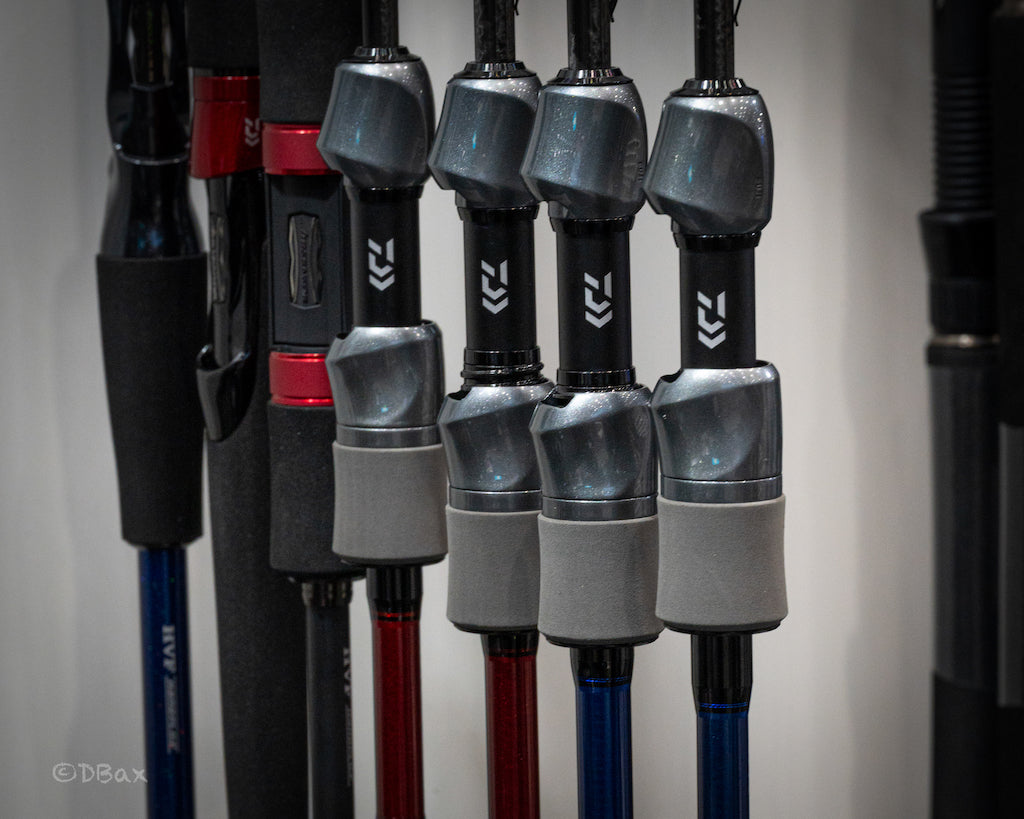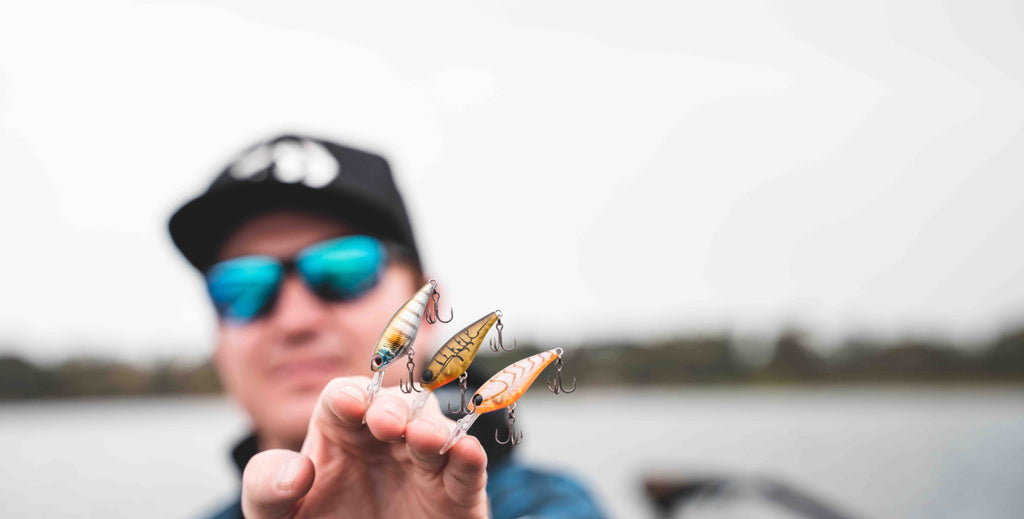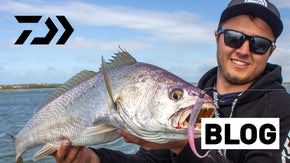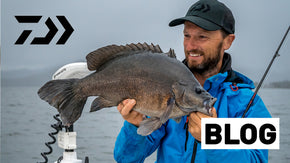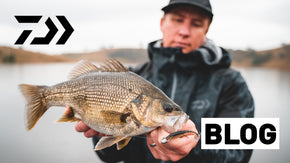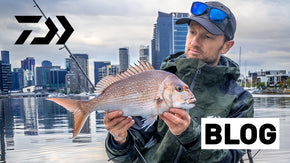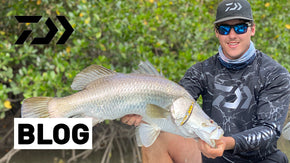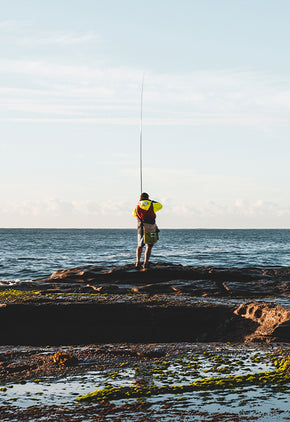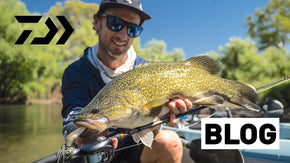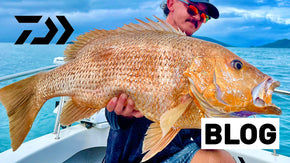Posted 25th August 2023
How to Catch Flathead on Hardbodies (Flathead Series)
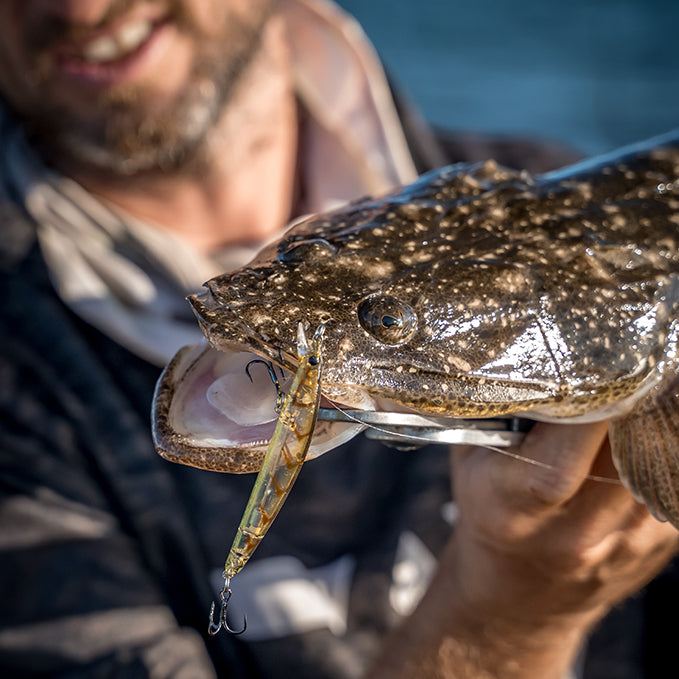

By Robert Thornton
Moving along with our flathead series, our next stop is hardbodies! As we approach the time of the year when duskies are most active, it’s well worth getting your head around these great lures if you haven’t already. If you want to learn how to catch flathead on lures, you really can’t skip the hardbodies module!
Fishing with hardbodies for flathead has experienced a resurgence in recent years, after having taken a backseat for almost 20 years to the soft plastic craze. Despite this, it’s not fair to say that hardbodies are any less effective than their rubbery counterparts – in fact, many would probably argue that under the right circumstances a bibbed lure will outfish a plastic 5 to 1!
This blog isn’t going to debunk the old debate of ‘which is better’. Instead, we’re going to focus more on ‘how to choose ‘em’ and ‘when to use ‘em’! Before we do that, though, we’ll take a quick dive into the world of hardbodies and their history with flathead.
If you’d like to read our flathead blog focussing on soft plastics, you can do so here. For a blog that covers flatty fishing more generally, click here.

A Hard History
Using hardbodied bibbed lures for flathead goes back as far as lure fishing itself in this country, which is at least the early 1900s (and most likely earlier). These crude designs (most of which were imported from the US or home-made) certainly got the job done, however it wasn’t until the 1940s and ‘50s that Australian-made lures came onto the scene.
Early Aussie designs were usually put together with wooden bodies and metal bibs, were often jointed, and were all hand-made. It’s interesting to think that when we see people tossing Doubles Clutches across shallow sandflats for flathead, forward-thinking anglers were doing almost exactly the same thing 80 years ago, albeit with slightly different materials!
Since then, the fishing tackle market has expanded to keep up with our ever-growing knowledge and understanding of fish behaviour, and now anglers are spoilt with a huge selection of hardbodies designed here and overseas. In fact, Daiwa was directly involved in the recent rediscovery of hardbody’s effectiveness on flatties, with some of their hardbodied range proving to be exactly the right tool for probing the estuary shallows.
With the history out of the way, we can now jump into some different hardbody types, and how and when to use them on our beloved flatfish!
Crankbaits
When learning how to catch flathead on hardbodies, it makes sense to start with the most basic – the OG, if you will. ‘Crankbait’ is an American term, but it refers to a bibbed lure that is designed to be wound slowly, or ‘cranked’, to produce a tight wobbling action.
Crankbaits are often bounce over structure and the along the bottom when retrieved, with the bib kicking the rear of the lure upwards and keeping the hooks clear of said structure. Well-designed cranks will allow the angler to get their presentation in super tight to structure or the bottom and give off a level of vibration and noise that isn’t possible with soft plastics. For an aggressive feeder like flathead, this is perfect. The other bonus is that they are rigged up with trebles, rather than a single hook point, meaning the hook-up potential of these lures is far better than with plastics. Daiwa has developed quite a few crankbaits over the years, and there’s a handful of them that are effective on flathead.
For a classic round-bodied crankbait, you can’t go past the Steez RPM Crank Mid-10. These guys will dive to approximately 10ft on the cast, and can be wound through tight structure comfortably, giving off a high pitch movement and a relatively wide wobbling action. A crankbait like this is perfect for fishing over a flat or in a shallow channel with a rocky, rubbly or shaly bottom. The colour options for this lure are great for imitating a little crab making its way along the bottom, and any flathead nut worth their salt knows that flatties absolutely love eating crabs.
Smaller cranks like the Infeet Rollin’ Crank DR and MR (deep-running and medium-running) are a great option for heavily pressured waterways, areas with smaller flathead, or if the angler wants to attract by-catch such as whiting or bream. While these two smaller cranks are often used as bream lures, they will regularly pick-up flathead, and are a great option for a beginner looking to fish in shallow estuaries, especially if there’s a bit of rock or rubble on the bottom. The DR is incredibly effective when worked along the base of rock walls and through any deeper holes, while the MR is a great tool for cranking across rubbly or rocky flats in a metre of water or less. The Rollin’ Cranks and the RPM Crank are designed so that if you can feel them becoming stuck as you retrieve, giving them a bit of slack will allow them to float up backwards and clear of the structure. You can then recommence your retrieve without getting hung up!
Trolling is a hugely successful technique for flathead, and I would argue that it’s probably easiest way for a beginner to crack their first flatty on a lure! Luckily for you, Daiwa also have lures that will work really well on the troll. The trick with flathead trolling is to choose a hardbody that runs at roughly the same depth you’re trolling. The reason this is important is because you want your crankbait running along or near the bottom where most flathead will be, but not ploughing through the sand or mud and getting itself fouled up.
For deeper areas (3-5m), the Infeet Spike EXDR (extra deep-running) is an excellent choice. At 53mm it’s a snack for flathead, and the shad-shaped body will imitate many common forage species.
For shallower zones (2.5-1m) the Spike 53SP has got you covered. Alternatively, if you wish to cast with this lure, it has the advantage of neutral buoyancy. This means you can pause the lure on the retrieve and it will suspend naturally, much like a real baitfish. Allowing these lures to ‘hover’ just off the bottom is a great ploy, especially if the fishing is a little slow, or the water is very clear.

Jerkbaits
This is where hardbodies start to get interesting, and where Daiwa’s range have become a ‘go-to’ for flatty hunters Australia-wide! Another Yanky term, ‘jerkbaits’ are generally long, thin, bibbed hardbodies that are designed to be twitched or ‘jerked’, rather than cranked. Jerkbaits do an excellent job of imitating an injured or confused baitfish, and the models that are designed to suspend are incredibly deadly on flathead anywhere!
The best-known and probably the most widely-used jerkbait for flathead in Australia is Daiwa’s Double Clutch range, which has 48, 60, 75, 95 and 115mm models that all suspend. These lures can be fished in most areas but are particularly effective over flats comprising mostly sand or mud. Water between 1-2m is ideal for the Double Clutches, with the best size dependant on the size of the bait you’re trying to imitate and the size of the flathead you’re hoping to attract. Ideally, you want these lures to bump the bottom as you twitch them, and this will kick up little bits of sand or mud. Between twitches, these lures will hover just above the bottom like a real baitfish, and quite often this is when they get eaten.
In super shallow areas less than 1m, or over flats with a lot of structure or patches of weed that will foul up deeper running lures, the Infeet Sazanami 60SP, Double Clutch 75SR (shallow-running) and Presso Minnow 95SP are great weapons of choice. The shallow running design of these lures will prevent them from digging into the sand or mud too much if that’s not what you want. Additionally, if you’re aiming to twitch your jerkbaits and let them suspend off the bottom (especially if there’s a lot of weed or other snags down there), these lures will do just that.
The range of natural colours these jerkbaits come in perfectly match the light and often translucent hues of local forage species like whiting, gar, herring, anchovies, pilchards and more.
Sinking Minnows
Sinking minnows aren’t hugely popular with flathead, but they are very handy to have in your box for certain situations. While employed more often for trout than anything else, their sinking properties can provide advantages for the flathead angler.
Sinking minnows are normally slender or shad-shape designs, have a small but angled bib, and come in both one-piece and jointed configurations. As the name suggests these guys sink, and are at their best when cast into fast-flowing streams for species like trout, sooty grunter and jungle perch. A sinking minnow is far less likely to be swept away from where it was originally cast than a floating model and will give off a great ‘shimmy’ that other sinking lures like soft plastics and spinners can’t. Flathead aren’t usually targeted in fast-flowing streams, however the mouths of drains, run-off zones and even turbulent surf gutters can present similar challenges.
The SilverCreek DR Minnow II 42S and 50S are perfect little snacks for flatties, and if you want to try a jointed design, the SilverCreek DR Minnow Joint II 42S and 50S will offer that classic like-life ‘sway’ that jointed lures tend to have.
These lures aren’t ideal in every situation and should definitely be avoided when targeting areas with snaggy bottoms or where the underwater terrain is unknown.
Harden Up!
As you can see, hardbodies offer a lot for anyone wanting to chase flathead on lures and shouldn’t be classed as a secondary option to soft plastics. Both hardbodies and soft plastics have their strengths, and by recognising these strengths and understanding how they relate to flathead fishing you’ll be able to make better decisions on the water.
If you’ve never tried using hardbodies for flathead, make sure you grab some in a few in different sizes, colours and running depths and start experimenting!


 Contact Us
Contact Us Blog
Blog About
About
